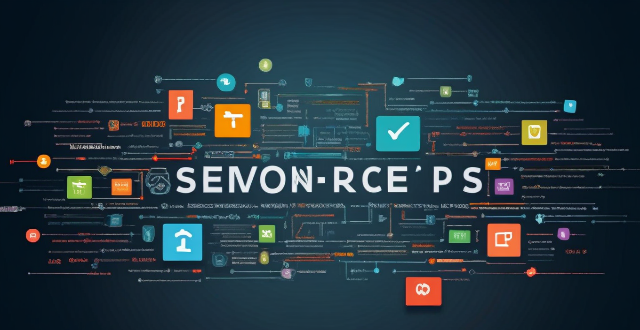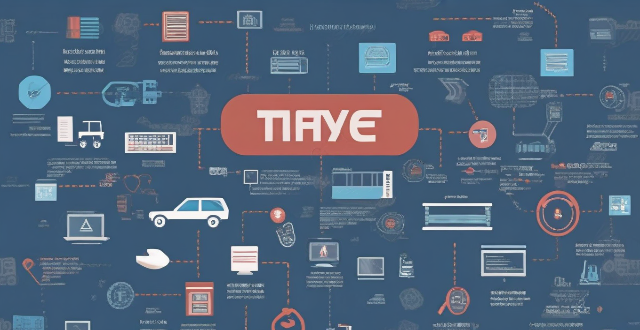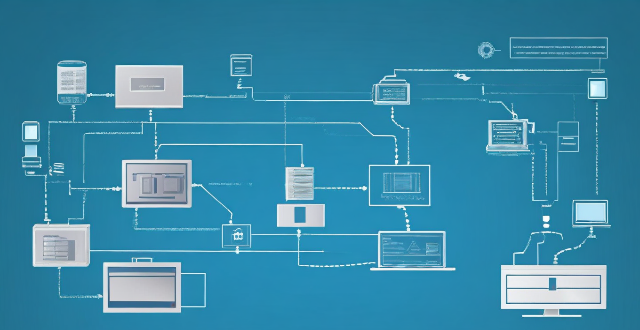Threat Update

How do I update my apps on the App Store ?
Updating apps on the App Store is essential for maintaining the latest features and security patches. Here's a guide to help you update your apps: 1. Open the App Store app on your iOS device. 2. Tap on your profile picture in the top right corner. 3. Scroll down to the "Upcoming Automatic Updates" section. 4. Review the list of apps with available updates. 5. Update individual apps by tapping the "Update" button next to each app's name. 6. Update all apps at once by tapping the "Update All" button. 7. Wait for the updates to download and install. 8. Check for any remaining updates and repeat the process as necessary. 9. Close the App Store app when finished. Additional tips include enabling automatic updates, checking for updates regularly, and managing storage space. By following these steps, you can ensure that your apps are always up to date and provide the best performance and features.

How do I install the latest iOS update on my iPhone ?
Updating your iPhone to the latest iOS version is essential for maintaining optimal performance, security, and access to new features. Here's a step-by-step guide to help you through the process: Before starting the update, ensure you have backed up your iPhone, charged it to at least 50%, and connected to Wi-Fi. To update via OTA (Over-the-Air), go to Settings > General > Software Update and tap "Download and Install" if an update is available. For a wired connection, backup your device, connect your iPhone to your computer using a Lightning cable, open iTunes/Finder, select your device, and click on "Check for Update." After the update has been installed, your iPhone will restart several times to complete the installation process. Check for app updates separately and explore any new features or changes introduced with the update.

What is the importance of regular software updates in network security protection ?
Regular software updates are vital for network security protection, addressing vulnerabilities, improving performance, adding features, and maintaining compliance with industry standards. Best practices include establishing an update policy, using automated tools, testing updates, prioritizing critical updates, maintaining a system inventory, educating users, monitoring post-update issues, staying informed about threats, backing up data, and reviewing third-party applications for updates. Adhering to these practices reduces cyber threats and ensures the integrity of systems and data.

Will the latest iOS update improve battery life on my iPhone ?
The latest iOS update may improve battery life on iPhones due to optimizations, bug fixes, and reductions in background activities. However, hardware limitations and new feature requirements can negatively affect battery performance. User feedback, testing, and monitoring are essential for assessing the impact of updates. If a decrease in battery life is observed, waiting, resetting settings, or contacting Apple support are recommended actions. The outcome depends on device age, update specifics, and usage patterns.

How often should I review and update my knowledge framework to ensure it remains relevant and accurate ?
To ensure your knowledge framework remains relevant and accurate, review and update it regularly. The frequency depends on factors like the rate of change in your field, learning goals, and the amount of new information encountered. General guidelines include weekly reviews, monthly updates, quarterly assessments, and annual overhauls. Tips for effective review and update include setting aside dedicated time, being open to change, using organizational tools, and seeking feedback.

How long does it usually take for the iOS update to download and install ?
The time it takes for an iOS update to download and install can vary depending on the size of the update, internet connection speed, and device performance. Factors affecting the process include the size of the update, with larger updates taking longer to download than smaller ones; internet connection speed, where a fast, stable internet connection is crucial for quick downloads; preparation time after the download, which is relatively quick and shouldn't take more than a few minutes; installation time, typically around 10-20 minutes depending on the size of the update and the device; overall, combining both downloading and installing, the entire process can take anywhere from 40 minutes to over an hour and a half. Tips for a smooth update include backing up your device before starting any update, using a stable Wi-Fi connection for updating, ensuring that your device has at least 50% battery life before starting the update, and updating your device when you won't need it for a while, such as overnight.

What is the role of firewalls in network security protection ?
Firewalls are crucial for network security protection, acting as a barrier between trusted and untrusted networks to prevent unauthorized access and block malicious traffic. They monitor network activity for potential threats, with various types including packet-filtering, stateful inspection, application-level, and next-generation firewalls. Firewalls offer benefits such as access control, threat prevention, visibility and auditing, and compliance enforcement. Best practices for deploying firewalls include implementing a multi-layered defense strategy, regularly updating firewall rules and policies, monitoring logs and alerts, conducting regular penetration testing, and training staff on firewall management and maintenance.

How does the threat of climate change influence our cognitive processes and decision-making ?
The influence of climate change threat on cognitive processes and decision-making is significant. It can affect perception of risk, trigger emotional responses, and alter information processing. Additionally, it shifts priorities in decision-making, necessitates long-term planning, and requires collaboration among various stakeholders.

What are the latest trends in network security protection ?
Network security is a crucial aspect of modern computing, and it's constantly evolving to keep up with new threats. Here are some of the latest trends in network security protection: - AI and ML are becoming increasingly popular for detecting and responding to cyber threats. - IoT devices have poor security features or lack them altogether, making them easy targets for hackers. - With more businesses moving to the cloud, ensuring data is secure is essential. - Threat intelligence involves collecting information about potential threats and using it to improve defenses. - The zero trust model assumes that no one should be trusted by default, including those within an organization's network.

What role does AI play in improving cybersecurity ?
AI significantly enhances cybersecurity by offering advanced threat detection, risk assessment, and automated response mechanisms. It improves the efficiency and accuracy of defenses but also presents new challenges that require innovative solutions. AI's role in cybersecurity includes advanced threat detection through anomaly detection and predictive analytics, automated risk analysis for optimized defense strategies, enhanced malware detection using deep learning models and behavioral analysis, improved identity verification with biometric authentication and adaptive access controls, network automation and repair for self-healing networks and vulnerability management, and phishing and spam prevention through email security solutions and real-time alert systems. However, AI's integration into cybersecurity also introduces potential misuse by attackers, data privacy concerns, and algorithmic transparency and bias issues. Addressing these challenges is crucial for fully leveraging AI's potential in enhancing cybersecurity while upholding privacy, ethical standards, and resilience against emerging threats.

How often should I update my shopping list ?
Updating your shopping list is essential for staying organized and ensuring you have everything you need. The frequency of updates depends on lifestyle, household size, and personal preferences. Tips for effective updating include keeping track of inventory levels, planning meals ahead of time, using technology, and being flexible.

What are the main threats to communication security ?
The text discusses the main threats to communication security, which include eavesdropping and unauthorized access, malware and viruses, social engineering and phishing, insider threats, and DoS attacks. It also provides mitigation strategies for each threat, such as encryption, secure networks, physical security, antivirus software, firewalls, software updates, awareness training, email filters, multi-factor authentication, access controls, monitoring and auditing, termination procedures, rate limiting, content delivery networks (CDNs), and intrusion detection systems (IDS).

Is there a difference between personal safety training for men versus women, and if so, what are those differences ?
The main differences in personal safety training between men and women are physical, situational awareness, and verbal communication. Men generally have more muscle mass and strength than women, making them more physically capable of defending themselves in certain situations. Women are often taught to be more aware of their surroundings and potential threats, as they may be more vulnerable to attacks. Additionally, women are often taught to use verbal cues to deter an attacker, while men are encouraged to use a more assertive tone when confronting a potential threat. Tips for men include practicing self-defense techniques that utilize strength and size advantage, learning how to properly use weapons such as pepper spray or a stun gun, being aware of surroundings and potential threats, trusting instincts, using a firm tone when confronting a potential threat, and avoiding aggressive language that could escalate the situation. Tips for women include focusing on learning techniques that can help escape from an attacker's grasp, taking a class in martial arts or self-defense specifically designed for women, always being aware of surroundings and potential threats, trusting instincts, using verbal cues to deter an attacker, and avoiding engaging with an attacker beyond what is necessary to protect oneself.

How often should I replace or update my signal booster ?
This topic summary discusses the importance of maintaining and updating a signal booster to ensure optimal performance. It outlines signs that indicate it's time to replace the booster, such as decreased performance or physical damage. The text also emphasizes the significance of regular firmware updates for improved functionality and security. Additionally, it provides a step-by-step guide on how to update the firmware and offers maintenance tips to prolong the booster's lifespan, including cleaning antennas, avoiding obstructions, and regular inspections. Overall, the summary stresses the need for periodic checks and updates to keep the signal booster functioning effectively.

How often are the rankings of online shopping sites updated ?
The text discusses the frequency of updates for online shopping site rankings, highlighting key factors affecting update frequency such as site size, number of products, and level of competition. It outlines common update frequencies like daily, weekly, and monthly. The benefits of regular updates include improved accuracy, increased sales, and enhanced customer experience. The conclusion emphasizes the importance of staying up-to-date with trends and customer preferences for success in online shopping.

How can I make sure my GPS is updated for a cross-country road trip ?
To prepare for a cross-country road trip, it's essential to ensure your GPS is up-to-date. Here are the key steps: 1. **Check Compatibility**: Ensure your device can receive updates. 2. **Connect to the Internet**: Use a reliable connection for downloading updates. 3. **Visit Manufacturer's Website**: Follow instructions to update your GPS. 4. **Download and Install Updates**: Include map updates and software patches. 5. **Verify the Update**: Check that updates have been successfully applied. 6. **Test the Device**: Ensure it functions correctly with the new updates. Additional tips include backing up data, checking for firmware updates, ensuring the device is charged, and planning ahead to avoid last-minute rushes.

How often should I revisit and update my notes ?
Revisiting and updating your notes is a crucial learning process that helps reinforce information, identify areas needing attention, and keep notes relevant and organized. Immediately after class or meeting, review key points, fill in gaps, and organize the information. Within 24-48 hours, consolidate learning, connect ideas, and identify questions. Weekly reviews should summarize concepts, integrate with other subjects, and reflect on understanding. Monthly reviews aid long-term retention, update notes, and prepare for assessments. Before major assessments, do a comprehensive review, practice application, and create study aids. Ongoing maintenance includes cleanup, indexing/categorizing, and digital backup. The frequency of revisiting and updating notes depends on subject complexity, learning goals, and deadlines.

When is the next iOS update expected to be released ?
The next major iOS update, likely to be named iOS 17, is expected to be announced at Apple's Worldwide Developers Conference (WWDC) in June 2023, with a public release anticipated in the fall. Minor updates and security patches may be released throughout the year without a fixed schedule. To stay informed about updates, users can check Apple's website, enroll in the Beta Software Program, follow tech news, or regularly check for updates in their device settings.

Is it safe to update my iPhone to the latest iOS version ?
Updating your iPhone to the latest iOS version is generally considered safe, but it's important to take precautions such as checking compatibility, backing up your data, and freeing up storage space before installing the update. If you encounter any issues after updating, try restarting your device or contacting Apple Support for assistance.

How often should sports coaches update their training knowledge and techniques ?
Sports coaches should regularly update their training knowledge and techniques to improve athlete performance, prevent injuries, stay competitive, and retain athletes. The frequency of updates depends on factors such as sport specifics, level of competition, and personal growth. Recommended methods for staying updated include attending workshops, reading books and articles, watching videos and webinars, collaborating with other coaches, participating in online courses, and practicing new techniques. Ideally, coaches should aim to update their knowledge multiple times per year.

How often should I update my personal image to stay relevant ?
The text discusses the importance of updating one's personal image to stay relevant in a rapidly changing world. It emphasizes that updating your personal image doesn't mean chasing every trend but evolving authentically to represent who you are and where you're going. The frequency of updates should be based on significant life changes, seasonal changes, and an annual review of your image. Elements to consider for updates include appearance, online presence, skillset, and network. Practical tips for updating your personal image include staying informed, seeking feedback, investing in quality, and embracing change. Overall, the text suggests that regular updates to your personal image can help maintain and enhance your personal brand, opening doors to new opportunities and ensuring success in both personal and professional life.

How often should I review and update my insurance coverage ?
Insurance coverage is a vital part of financial planning, and it's essential to ensure that policies are up-to-date and reflect current needs. Here's a guide on how often to review and update insurance coverage: 1. **Life Events**: Review coverage during significant life events like marriage, divorce, having children, buying a home, retirement, or job changes. 2. **Annual Check-ups**: Even without major life events, annual reviews help ensure coverage sufficiency, competitive rates, and accurate policy details. 3. **Quarterly Check-ins**: These can aid in monitoring premium payments and understanding policy updates or regulatory changes. 4. **Monthly Reminders**: Set reminders to monitor claims processing, check for discounts, and update emergency contact information. By staying proactive and informed about insurance policies, individuals can ensure they have the right coverage for their evolving needs.

How often should I review and update my estate plan ?
Estate planning is crucial for managing assets post-demise. It requires regular updates due to life changes, laws, and preferences. Major life events necessitate immediate attention. Annual reviews ensure documents are current and reflect personal relationship changes. Every three to five years, review to accommodate tax law changes and reassess beneficiaries. Law changes may also prompt updates. Regular reviews ensure your estate plan aligns with life's dynamics.

How often should I change my iPhone wallpaper ?
The frequency at which you change your iPhone wallpaper depends on personal preference, but there are some factors to consider when deciding how often to update your background image. The most important factor is your own personal preference - do you enjoy having a variety of backgrounds to choose from or prefer to stick with one that you really like? Seasonal changes can also play a role in how often you change your wallpaper - you may want to switch it up to reflect the current season or holiday. Your mood and emotions can also influence how often you change your wallpaper - if you're feeling down or need a pick-me-up, you might choose a bright and cheerful background. Maintenance and upkeep is another factor to consider - if you download new images frequently or take your own photos, you may want to update your wallpaper more regularly. Ultimately, the key is to find what works best for you and makes you happy.

How do I know if my iPhone needs a software update or a hardware repair ?
The text is a guide that helps iPhone users determine whether their device requires a software update or hardware repair. It outlines steps to check for available updates, restart the device, and reset it to factory settings if needed. The guide also suggests inspecting the iPhone for physical damage, testing basic functions, and checking battery health as indicators of potential hardware issues. If unsure about the cause, the text advises visiting an Apple Store or authorized service provider for further diagnostics.

Are there any known issues or bugs with the latest iOS update ?
Summary: The latest iOS update has introduced several known issues and bugs, including battery drain, Wi-Fi connectivity problems, app crashes and freezes, and other minor glitches. To resolve these issues, users can try steps such as checking app usage, adjusting settings, updating apps, restarting devices, and contacting support for further assistance.

What is the latest update on the NBA trade deadline ?
The NBA trade deadline has passed, resulting in severalThe NBA trade deadline has passed, resulting in several impact the league's play resulting in several notable trades that could impact the league's playoff race and future team dynamics. Key trades include the Boston Celtics acquiring Evan Fournier, the San Antonio Spurs sending LaMarcus Aldridge to the Brooklyn Nets, the Golden State Warriors acquiring Andrew Wiggins and D'Angelo Russell, and the Miami Heat acquiring Andre Iguodala. These moves have implications for both the teams involved and the league as a whole, with potential shifts in power and long-term effects on player development and team rebuilding efforts. Fan reactions to these trades have been mixed, with excitement and disappointment among different fan bases.